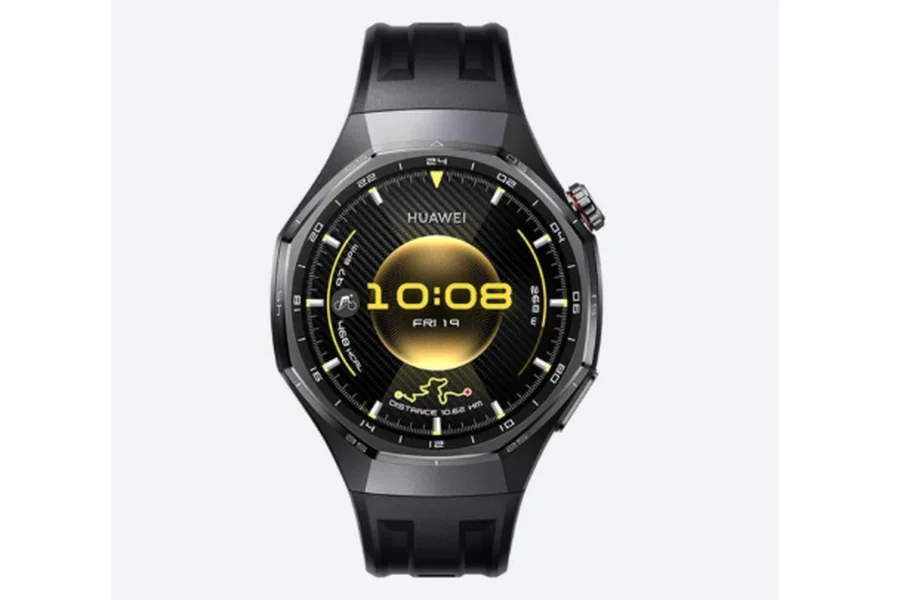Improving your running pace demands more than simply effort; it also necessitates real-time feedback, dependable statistics, and intelligent training tools. A wristwatch that helps runners run faster does more than just tally steps; it also guides effort and promotes success with actionable indicators. From novices chasing their first 5K goal to seasoned runners after personal bests, the appropriate gadget can transform each exercise into a focused, results-driven experience. This article explains which wristwatch features assist in enhancing pace, how training tools convert data into gains, and what to look for based on your goals—whether on the road, trail, or race course.
What Smartwatch Metrics Actually Help You Run Faster?
GPS, Real-Time Pace, and Lap Accuracy
Runners require precise pace information at every stride in order to run faster. Real-time speed tracking and insightful mid-run feedback are made possible by smartwatches equipped with high-precision GPS and lap clocking. While lap pace demonstrates consistency across splits, real-time pace helps you be conscious of your present effort level. Accuracy is increased by watches with multi-band GNSS, particularly in urban or forested environments. Every mile or kilometer offers instant insights thanks to auto-lap functionality. You’ll be able to tell right away if you’re falling behind or moving too quickly. You can develop rhythm, prevent burnout, and remain on course with the aid of dependable GPS pacing. It’s difficult to train effectively or pace well during races without this information.
Heart Rate, Zones, and Effort Tracking
Monitoring heart rate allows runners to train more effectively by directing effort rather than guessing. Smartwatches with optical or chest-strap heart rate tracking display how hard you’re working, divided into zones ranging from easy recuperation to high intensity. Training in the appropriate zones, particularly aerobic zones for endurance and anaerobic zones for speed, improves performance while being safe. Some watches modify zones based on fitness level or measure heart rate variability to aid recuperation. Zone signals let you know when to push harder or back off. Using heart rate as a pacing tool keeps you from overtraining or underperforming. It’s vital for tailoring long runs, intervals, and tempo sessions to your fitness objectives.
Cadence, Stride, Power, and Form Feedback
Beyond speed and heart rate, sophisticated measurements such as cadence, stride length, and running power give more information on running efficiency. Cadence (steps per minute) helps runners decrease injury risk and increase flow. Stride length influences speed and energy expenditure. Smartwatches with form feedback measure symmetry, vertical oscillation, and ground contact time. Some methods can measure running power by sensing effort as the terrain and elevation change. These measures reveal poor form or exhaustion during lengthy runs. Real-time alerts and post-run analysis indicate where to improve. Tracking form measurements enables runners to maintain efficiency and speed under duress. Together, they change the way you train, not simply how far or fast you go.
How Do Training Features Turn Data Into Speed Gains?
Intervals, Workouts, and Pace Sessions
Smartwatches provide training modes that help you arrange your routines for actual results. Interval training modes allow you to customize your work and rest intervals, which is ideal for increasing speed and endurance. Guided exercises provide speed or heart rate objectives to meet your fitness level. Race pace workouts replicate the effort required on the day of the race. You may use your watch to pre-program sets such as 4x800m repeats or progression runs. Vibration or sound notifications help you stay focused without having to check your device. These organized workouts guarantee that you consistently achieve the proper intensity. Over the course of many weeks of training, consistent effort combined with smart data enhances speed, stamina, and pacing discipline—all of which are necessary for faster running.
Alerts, Splits, Virtual Pacer, Race Tools
Smartwatches provide runners with pace warnings, negative split guidance, and race-day pacing aids. Pace alarms warn you if you drift too fast or too sluggish, and lap notifications provide your split time for each mile or kilometer. Some watches have a virtual pacemaker or ghost runner that replicates race-day performance. Race widgets allow you to establish time goals and track progress in real time. These tools help you maintain consistency from start to finish. Knowing your aim and tracking it live instils confidence and focus. Smart pacing technologies provide visual and aural signals to promote consistent effort and avoid late-race exhaustion, offering runners a tactical advantage on race day.
VO2 Max, Load, Recovery, Sleep
A balanced approach to training and rest leads to performance increases. Smartwatches measure VO2 max to determine aerobic fitness and progression over time. Training load measurements indicate if you are building, maintaining, or overreaching. Recovery statistics help you organize your rest days and avoid burnout. Watches also track sleep quality, which is important for recuperation and vitality. Daily readiness ratings based on sleep, HRV, and recent exercise help determine how difficult it is to train. These characteristics let you know whether to push or draw back. Ignoring recuperation delays progress and increases injury risk. Smartwatches that balance effort and recuperation allow you to train more effectively and run faster week after week.

Which Smartwatch Features Matter Most for Your Running Goals?
For Beginners and 5K/10K Runners
Beginner-friendly smartwatches should provide straightforward, accurate pace tracking, easy-to-read data panels, and mild training routines. Preloaded exercises or run-walk modes aid in early improvement. Heart rate zones and simple sleep tracking assist in monitoring recovery. Auto-pause and audio prompts keep things focused without requiring additional input. Lightweight design and straightforward apps make it easier to use. During tempo or progression runs, 5K or 10K athletes benefit from adjustable pace and distance warnings. Some approaches use motivating reminders or guided coaching. Prioritize watches that provide comprehensible info without overkill. A solid foundation in pace, effort awareness, and consistency will result in quicker times and more confidence.
For Half and Full Marathon Runners
Marathon runners require smartwatches that measure endurance-specific parameters and assist scheduled workouts. Long battery life, multi-band GPS, and real-time fuelling reminders are required for longer workouts. Race forecast tools, route direction, and training load feedback all influence weekly progress. Recovery insights guarantee that your long runs and tempo workouts do not lead to overtraining. Watches with performance condition tracking provide mid-run feedback on how your body is handling the load. Split analysis, pacing tools, and heart rate patterns may all help you tailor your next workout. Serious distance runners benefit from timepieces that track both volume and effort during each training block.
For Trail, Ultra, and Safety-Focused Athletes
Trail and extreme runners require sturdy timepieces with long battery life, topographic maps, and elevation tracking. Breadcrumb trails and back-to-start capabilities are useful navigation tools in rural regions. Barometric altimeters, storm alarms, and sunrise/sunset tracking increase safety on lengthy trips. Heart rate and power data aid in pacing during difficult climbs. Custom split alerts, depending on terrain or time, can help save energy. Some versions have SOS warnings and live tracking to increase safety. Trail runners can benefit from the robust design and glove-friendly buttons. Ultra-focused runners require multi-day battery options, sun recharge, and offline navigation. These timepieces are essential for maintaining safety and pace in uncertain circumstances.
Conclusion
Runners who want to increase their speed quickly need smartwatches that do more than just measure steps; they also need to arrange workouts, manage intensity, and aid in recovery. The appropriate stats and notifications let you train with purpose, whether you’re traversing trails, chasing splits, or doing intervals. These technologies transform data into more intelligent judgments, from cadence to VO2 max. Some watches even offer tips on how to breathe when running, helping you stay relaxed and efficient under pressure. The ideal smartwatch for you is determined by your running ambitions, which may include short events, marathons, or difficult ultras. When properly set up, your watch becomes a personal coach on your wrist. Use it to run smarter, recover faster, and reach your next level of speed, regardless of where you start.



